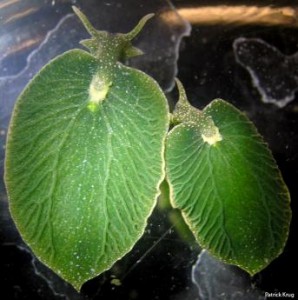In a very basic sense there is a general dichotomy in the grouping of organisms on this planet as either a plant or as an animal. Myself, like most of the rest of you, belong to the animal group, but there are those organisms out there that exists on the boundary; one in particular is the sea slug, Elysia chlorotica.

This sea slug is unique because it harvests the chloroplasts from the algae it eats and incorporates them into its own body. As a quick reminder, chloroplasts are the cells in plants that allow for photosynthesis, the process of converting light energy into chemical energy and storing it in the bonds of sugar. By stealing cells from plants this sea slug gains the rare ability as an animal that can photosynthesize.
It has been known for quite some time that this sea slug incorporates chloroplasts from the algae it eats, giving it its rich green color, but recently the mechanism of how that occurs was unraveled. Julie Schwartz, from the University of South Florida, and a team of researchers presented direct evidence that this unique sea slug’s chromosomes contains genes from the algae it eats! This is important because those genes help sustain photosynthetic processes inside the slug, essentially allowing it to repurpose the chloroplasts for its own use.
This unique ability has human applicability as well. We know virus do a pretty good job of hijacking genes, but this is one of the only known examples of functional gene transfer in multicellular organism, and the process this sea slug uses to pull it off could offer insight into gene therapy in humans to correct genetically based diseases.
You can read more about the specifics regarding how this unique animal is able to get plant cells to work in its favor in the journal Biological Bulletin.
Nature, you so cool!